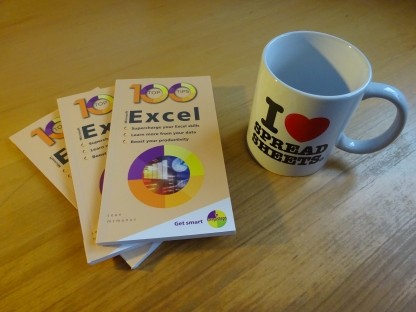
100 Top Tips: Microsoft Excel
Power up your Microsoft Excel skills with this powerful pocket-sized book of tips that will save you time and help you learn more from your spreadsheets.
04 February 2025
 Artificial intelligence (AI) is a valuable productivity tool for many jobs now. I've written previously about how AI can negotiate contracts and help with programming, but people are increasingly bringing their own AI tools, such as ChatGPT, into the workplace without permission. According to a Software AG survey, half of knowledge workers use personal AI tools. Unauthorised AI tools are sometimes called "shadow AI", a more specific version of "shadow IT", which is the term used for unauthorised IT.
Artificial intelligence (AI) is a valuable productivity tool for many jobs now. I've written previously about how AI can negotiate contracts and help with programming, but people are increasingly bringing their own AI tools, such as ChatGPT, into the workplace without permission. According to a Software AG survey, half of knowledge workers use personal AI tools. Unauthorised AI tools are sometimes called "shadow AI", a more specific version of "shadow IT", which is the term used for unauthorised IT.
For my latest article for the BBC's Technology of Businesss, two people told me why they use shadow AI, on condition of anonymity. The article also looks at the risks of unauthorised AI and showcases Trimble's solution to shadow AI, which was to create its own general-purpose AI tool for its people to use.
The article was given the top feature slot on the BBC News homepage, and was followed up by the Business Matters programme on the BBC World Service. Read it here: Why employees smuggle AI into work.
To be updated when I write articles like this in the future, please susbcribe to my newsletter. Thank you to everyone to helped with the article, especially my two interviewees who shared their experiences anonymously.
Photo credit: Steve Johnson at Unsplash
Permanent link for this post | Blog Home | Website Home | Email feedback
09 January 2025
When I first saw the Lego Retro Radio set (10334), I wondered whether I could get it to play my own music by putting a Raspberry Pi inside it. The Lego designer included a grip for mounting your phone inside, but I wanted something that could interact with the tuning dial on the radio, and that I could leave in the radio permanently.
The Lego set features a sound brick, which has a button in it. When the button is pressed, it plays a short sound snippet, including some funny adverts and DJ quotes. The sound brick is triggered by turning the tuning dial. The key to making my project work was designing a replacement sound brick, which I could connect to the Raspberry Pi.
Now, when the tuning knob is turned, it activates my button, and a Python program reacts to the button press by changing the music playing.
To make it easy for others to use, I created the simplest program I could, which just plays songs and jingles alternately. However, it would be possible to make a more complex program using my Raspberry Radio code as a starting point. This uses text-to-speech to introduce each track, and indexes your music so you don't have to put the filenames in the code. It would be possible to have the button press change channel by switching between different song lists, and perhaps even changing the DJ's accent. Another cool addition would be to give each channel a name which is announced when it starts playing.
I've configured the Raspberry Pi so that my Python program starts running when the device is powered up. Inside the radio, I included another button which can be used to initiate a safe shutdown, without risk of damanging the micro SD card used for storage.
See my build instructions for playing your own music on the Lego Retro Radio using a Raspberry Pi.
Permanent link for this post | Blog Home | Website Home | Email feedback
03 December 2024
 I've published a new free ebook called Retro Compendium, which collects together the articles I've written about the Amstrad CPC, Spectrum and other retro computers.
I've published a new free ebook called Retro Compendium, which collects together the articles I've written about the Amstrad CPC, Spectrum and other retro computers.
Most of the articles were previously published in Amtix CPC magazine, which ran from 2021 to 2024. They include my investigation into whether ChatGPT could write Amstrad games, a run-down of pop music recreated in Amstrad games, and a report on the messages programmers hid in their Spectrum game code. Showing my love for magazines like Amstrad Action (AA), the ebook also includes a round-up of Christmas cover tapes from AA, and a short history of the Amstrad as seen through the final issues of the popular UK magazines.
There are game reviews, too, of Cassette 50, Get Dexter, Highway Encounter, Split Personalities (also known as Splitting Images), and Finders Keepers.
I've also compiled my listings, mostly originally published in Amstrad Action and Amstrad Computer User magazines, and have written an article about how I got them published. I don't expect anyone is typing them in in 2024, but listings were a big part of the CPC scene. Most of the games you can now play in your browser, or you can download my Amstrad CPC disc to use in your own emulator.
Many thanks to Chris Wilkins at Fusion Retro and David Crookes at Amstrad Addict, who originally published many of the articles in this ebook.
Download the ebook here. It's not gated, but please consider subscribing to my newsletter to be notified of updates to this ebook and my other creative projects.
Permanent link for this post | Blog Home | Website Home | Email feedback
12 November 2024
 I was sad to see that Future Music magazine is to close, with its final issue being number 414. I contributed a couple of articles to the magazine around 1993, and it's amazing to see that a title I wrote for then has lasted this long.
I was sad to see that Future Music magazine is to close, with its final issue being number 414. I contributed a couple of articles to the magazine around 1993, and it's amazing to see that a title I wrote for then has lasted this long.
One of the articles was an interview with Reel 2 Real, who had a hit with 'I Like to Move It', which more recently found fame in the Madagascar films. Reel 2 Real had recorded a track with Zig & Zag, puppet presenters of The Big Breakfast TV show. Future Music's style guide at the time encouraged humour, so I thought it would be fun to do a box-out on this collaboration. It also helped with wordcount, given it had been quite hard to get the technical detail I needed in the main interview.
I phoned the Channel 4 press office. "Would you like to make up some words from Zig & Zag that I can use in the article?"
"Oh no!" said the lady on the phone. "We couldn't do that."
I was disappointed.
"They would want to do that themselves," she said, brightly.
It amused me to think of the Channel 4 PR people deferring to the crazy puppets in this way, but they got me comments which arrived by fax in the Future Music office. After some confusion there ("er, anyone know why Zig & Zag are faxing us?"), it was posted to me, and this week I rediscovered the fax.
Here's what they wrote:
I suspect their writers Ciaran Morrison and Mick O'Hara might have helped with the joined-up writing, but the misspellings of names are Zig & Zag's.
So, farewell Future Music. Its sample packs and tutorials were helpful when I was recording my album Artificial, and I loved studying the studio photos to see what gear the interviewed artists were working with. I remember noticing that Jean-Michel Jarre's studio included a Novation Mininova, because I have that synth too. 414 issues is an incredible run for a specialist magazine, but it's becoming harder for magazines to survive. If there's one you love, support it today!
Permanent link for this post | Blog Home | Website Home | Email feedback
30 October 2024
 For my latest article for the BBC, I researched green software, which is software that makes efficient use of energy and hardware.
For my latest article for the BBC, I researched green software, which is software that makes efficient use of energy and hardware.
I have a keen interest in tech sustainability (see my previous articles on reducing website carbon emissions, digital product passports, and hard drive recycling). I have noticed the impact that software has on the life of hardware. I have an iPad Mini that works beautifully, except that the OS can't be updated now and so some apps refuse to run. It's becoming gradually unuseable as software support fades away, even though the hardware could last a lot longer.
The Green Software Foundation has created the Software Carbon Intensity (SCI) specification, which helps to measure the carbon footprint of software. You take the energy consumed by the software (in kilowatt hours), multiply it by the amount of carbon emitted by your energy source (in CO2 per kilowatt hour), and add the carbon emitted through the hardware the software is running on.
In this way, the equation counts the carbon emitted as the software runs, and the carbon resulting from the lifecycle of end-user devices too. There are several ways you can drive down carbon emissions, reflected in the SCI score. You can:
Importantly, you cannot game the SCI score by using carbon offsets. The score only goes down when your software's carbon intensity goes down.
The SCI calculation works on a unit scale like per user or per minute. “If your company’s doing well, it’s selling more of what you’re creating and your carbon emissions are increasing,” says Asim Hussain, executive director, Green Software Foundation. “What you need is a rate. If you’re [a video conferencing company] during Covid, your emissions would’ve shot up, but your carbon per minute should be going down year by year. That’s what you should focus on as a software team.”
Calculating the SCI necessarily requires estimation. How accurate is it? “I don’t agree that there’s a number that’s correct,” says Hussain. “When organisations are revealing numbers, they’re not counting carbon molecules in the atmosphere. They’re using their own models, which have their own assumptions baked into them. But if you’re fully transparent, you can’t be accused of greenwashing.”
To dig deeper into the issues, I took the Green Software Foundation's free short course on green software, which provides an excellent introduction.
Read my article on the BBC website: The green software that could make big carbon savings.
This is an important and interesting topic, so I hope to have an opportunity to write about it again in the future. Subscribe to my occasional newsletter for updates on all my writing and creative projects, including any future pieces about green software.
Permanent link for this post | Blog Home | Website Home | Email feedback
10 October 2024
I was fascinated to discover how being a police officer, astrophysicist or arts graduate helps to build a solid foundation for a career in cybersecurity.
For my latest article for the BBC's Technology of Business site, I interviewed people who had changed from markedly different careers into cybersecurity. The common thread was how valuable skills from other careers are in cybersecurity. That could be the ability to assess risk learned on the beat in Scotland, the skills to process huge amounts of data learned while studying galaxies, or the attention to detail developed in a personal assistant role.
With a shortage of four million cybersecurity professionals worldwide, the Chartered Institute of Information Security (CIISec) is advising companies to hire based on skills. “A lot of security is about people, process and technology," says Amanda Finch, chief executive, CIISec. "When we do our survey of the skills we’re short of each year, technical skills come out lower than communication, analytical and problem-solving skills.”
Some companies clearly are hiring for transferable skills: 41% of companies are trying to switch non-technical people into cyber-security roles within the company, and 39% of new cyber-security employees came from a non-IT role.
Together with my previous article on getting into tech without a degree, I hope my new article on cybersecurity careers will inspire readers to consider tech careers, whatever their past experience.
Permanent link for this post | Blog Home | Website Home | Email feedback
18 September 2024
The Musical Museum (Brentford, London) has opened a new gallery dedicated to Korg synthesisers and drum machines.
The museum's original collection tells the story of recorded and reproduced music. It includes a Violano, a combination of a violin and a 44-key piano which plays itself using music rolls. The Orchestrion from 1910 is a coin-operated mini-orchestra, performing music rolls with its built-in piano, xylophone, glockenspiel, drums, cymbal and triangle. The first thing you see when you arrive at the museum is a cabinet dedicated to Fisher Price toys, including the record player I loved as a child with its colourful disks of nursery rhymes.
Now, the collection has been brought up to date with a room packed with Korg instruments, many of which include sequencers for automating the playback of music parts. The killer feature? They're here to be played! A museum staff member said that you can ask for any of them to be switched on.
As well as modern instruments such as the Volca series of affordable and compact synths, there are classic synths such as the Korg MS-20 (with a wonderful oversized blackboard variant for use in Japanese classrooms), the Electribe sampler, and the Korg M1, which was used on Madonna's Vogue. At the launch event yesterday, visitors had an opportunity to try the PS-3300 recreation for the first time in the UK. This is an upcoming reissue of 1977's ultra-rare synth, used by Jean-Michel Jarre and Gary Numan, now with some added preset buttons to get you started.
The main gallery also has an original 1930 theremin you can play, and a concert hall with a Wurlitzer. This was masterfully demonstrated yesterday with a performance that included a song from The Phantom of the Opera and Queen's Bohemian Rhapsody.
The museum is well worth visiting if you have an interest in electronic music or recorded music. There are three main rooms in the museum, including the new Korg gallery, making it one of London's smaller museums. They are currently running a fundraiser and are interested in meeting new volunteers, so get in touch if you think can help.
Thank you to the museum staff and volunteers, performing musicians and the team from Korg for a great day at the launch event yesterday.
Play my album Artificial, which explores what happens beyond artificial intelligence when the machines get emotions. My novel Earworm tells the story of a record label that uses computer-generated music to manipulate both artists and fans.

The gallery is organised chronologically, with posters and promotional materials displayed above the instruments.

For the first time in the UK, the PS-3300 recreation.

A bank of Korg Volca devices you can tinker with. Some of these are also on sale in the museum shop.

The Korg MS-20 Blackboard version, mounted on the wall. How cool would it have been to have had one of these in your classroom?
Permanent link for this post | Blog Home | Website Home | Email feedback
© Sean McManus. All rights reserved.
Visit www.sean.co.uk for free chapters from Sean's coding books (including Mission Python, Scratch Programming in Easy Steps and Coder Academy) and more!

Power up your Microsoft Excel skills with this powerful pocket-sized book of tips that will save you time and help you learn more from your spreadsheets.
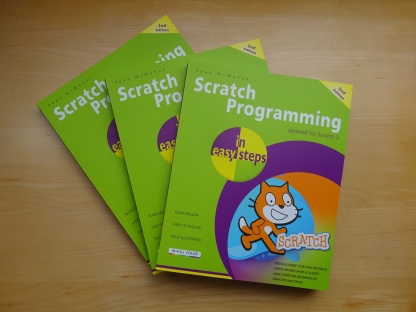
This book, now fully updated for Scratch 3, will take you from the basics of the Scratch language into the depths of its more advanced features. A great way to start programming.
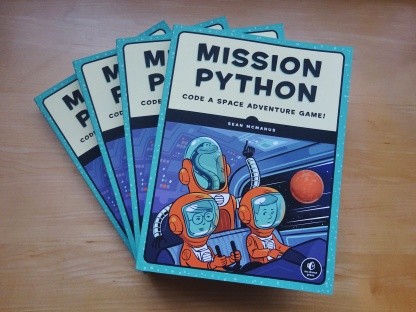
Code a space adventure game in this Python programming book published by No Starch Press.
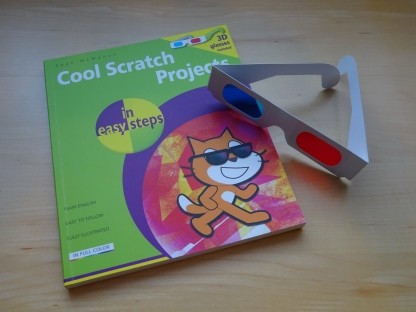
Discover how to make 3D games, create mazes, build a drum machine, make a game with cartoon animals and more!
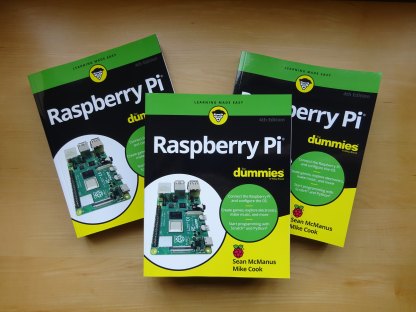
Set up your Raspberry Pi, then learn how to use the Linux command line, Scratch, Python, Sonic Pi, Minecraft and electronics projects with it.
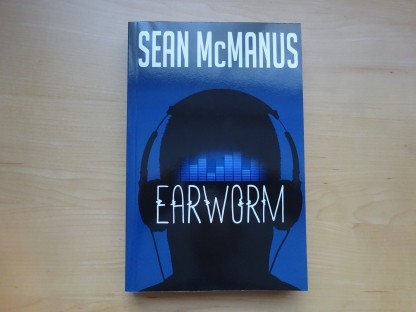
In this entertaining techno-thriller, Sean McManus takes a slice through the music industry: from the boardroom to the stage; from the studio to the record fair.